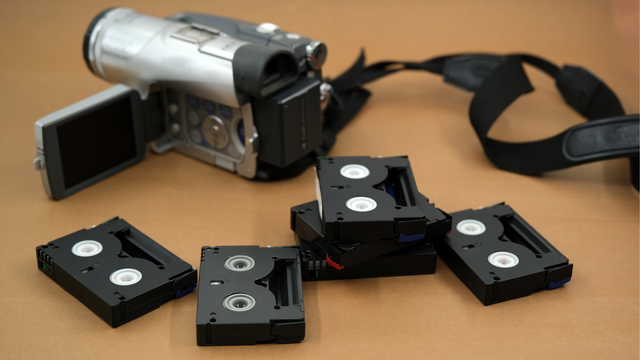The Word "Video" — A Vision of Life in Motion
Before we ever streamed a show or digitized a tape, the word “video” meant something more poetic. From the Latin videre, meaning “to see,” it reflected humanity’s desire not just to record life, but to relive it.
Video is more than a format—it's a feeling.
Early Motion Experiments: When Frames Found Life
Long before Hollywood, pioneers like Eadweard Muybridge experimented with rapid image sequences. His 1878 photos of a galloping horse proved that images could show what the eye missed.
Thomas Edison’s kinetoscope and the Lumière brothers’ cinématographe in the late 1800s brought moving pictures to life—though they had no sound, no color, and ran just seconds long.
And yet, audiences gasped. They had never seen anything like it.
The First Video Ever Made?
One contender is “Roundhay Garden Scene” (1888) by Louis Le Prince. Just 2.11 seconds long, this fragment captures people walking in a garden in Leeds, England. It’s grainy, ghostlike, and magical.
That was the spark.
16mm Film: Democratizing Video for the Masses
By the 1920s, 16mm film emerged as a more affordable format than 35mm, targeting educators and amateur filmmakers. Kodak’s introduction of home movie cameras helped families record birthdays, vacations, and little everyday wonders.
You may still have those reels in a box somewhere—fragile and silent. If so, it’s not too late to convert 16mm film reels to digital.
The Birth of Home Movies: 8mm and Super 8
In 1932, Kodak launched 8mm film—a compact, budget-friendly format that revolutionized home video. In 1965, they released Super 8, with better image quality and even sound.
Suddenly, capturing a child’s first steps or a holiday gathering became part of ordinary life. Today, those memories may be trapped in brittle reels—but you can rescue them with our 8mm film to digital service.
Enter VHS: The Video Home System Boom
In the late 1970s, VHS tapes entered the scene and changed everything. Easy to use, recordable, and lasting 2+ hours, VHS became the first true home video format.
We used them for movies, taped TV shows, and recorded camcorder footage. It was the first time people could watch—and rewatch—their lives.
But VHS has a weakness: magnetic degradation. Tapes wear out, go moldy, or snap. The best way to avoid loss is to convert VHS tapes to digital.
Betamax and LaserDisc: The Format Wars
Sony’s Betamax hit shelves in 1975 and had slightly better quality than VHS—but a shorter runtime. Despite early praise, VHS dominated.
LaserDiscs, larger than vinyl records, offered great quality but were expensive and bulky. A niche item, they paved the way for optical media like DVDs.
Both are nearly obsolete today. Heirloom’s commercial tape digitization helps preserve these rare gems before they vanish entirely.
DVDs and the Digital Shift
When DVDs arrived in the late 1990s, they felt futuristic. No rewinding. Interactive menus. Better quality.
But they’re still a physical medium—and that means they scratch, warp, and fade.
Many people still keep wedding videos and baby footage on DVD. Now is the time to convert DVDs to digital and preserve them in the cloud before the disc becomes unreadable.
Camcorders and Mini Formats: DV, Digital8, and MiniDVD
In the late 1990s and early 2000s, camcorders got smaller—and so did their formats.
-
MiniDV tapes offered clear, portable video.
-
Digital8 gave new life to analog camcorders.
-
MiniDVDs recorded directly to tiny discs.
Unfortunately, these formats are now difficult to play back, as camcorders and cables have disappeared from stores. The good news? You can convert camcorder tapes to digital and relive your footage anytime.
Cell Phones and YouTube: Everyone Becomes a Creator
By 2007, the first iPhones could record short videos. Then YouTube, launched in 2005, exploded with uploads.
Suddenly, video wasn’t something to mail or store in a box—it was something to stream, edit, and share instantly.
But what happened to the pre-YouTube memories? They deserve a second life, too.
TikTok and the Ultra-Short Video Era
We’ve gone from full-length films to 10-second clips. TikTok, Instagram Reels, and Snapchat revolutionized how we consume content.
Ironically, many families still haven’t digitized the long-form video moments that matter most—wedding vows, school plays, family traditions.
And that’s why services like Heirloom’s digitizing platform exist. We believe short-form and long-form video can live side-by-side.
Why Your Old Videos Deserve a Better Home
Tapes degrade. DVDs scratch. Reels crack. Devices break. Every analog format has a shelf life.
But your memories don’t have to.
Digitizing allows you to organize, view, and share your memories easily—especially when stored on a secure, redundant cloud. No subscriptions are required to access your content. And you’re never stuck with just a physical copy.
See how Heirloom works to keep your memories viewable on any screen, for any generation.
What Was the Most Popular Video Format of All Time?
By sheer numbers, it’s VHS—with over 10 billion tapes produced worldwide.
But in terms of cultural impact, we might say smartphones are the new kings of video. They put recording, editing, and publishing in your pocket.
Still, no app can recreate that old Super 8 reel from 1963 unless it’s preserved. That’s where digitizing services come in.

📧 Want more tips like this?
Subscribe to Heirloom emails to learn how to preserve your priceless memories. Get discount codes for expedited shipping, quality digitizing, and secure cloud storage. We never spam, and it’s easy to unsubscribe at any time.


